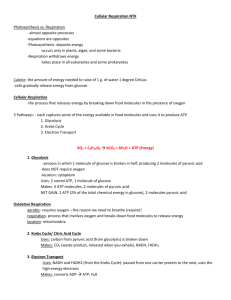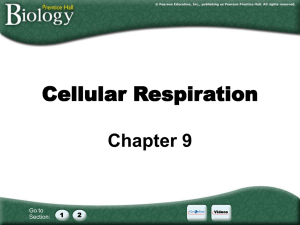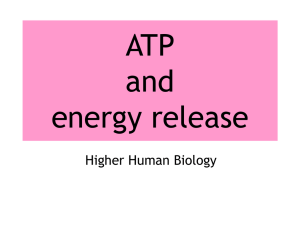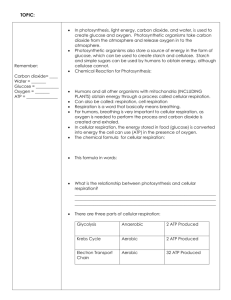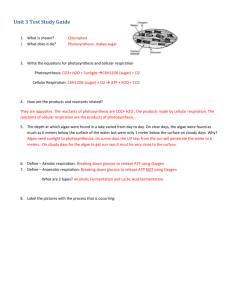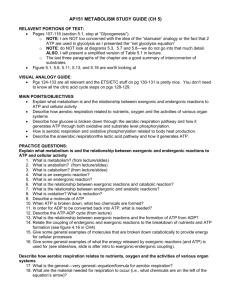File
advertisement
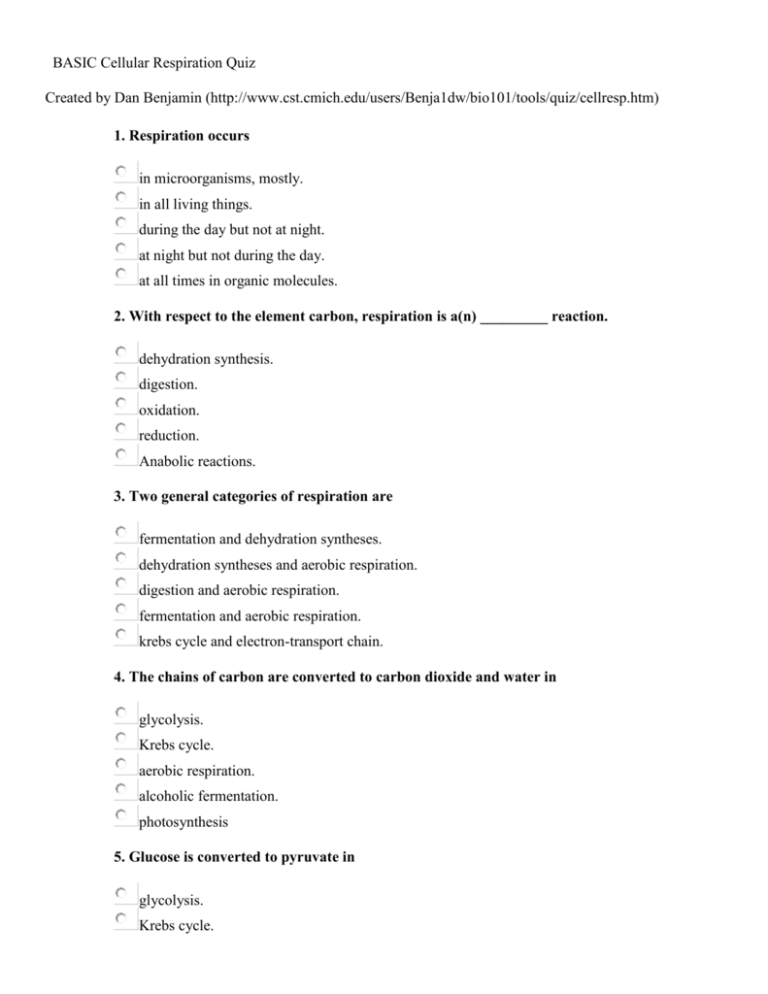
BASIC Cellular Respiration Quiz Created by Dan Benjamin (http://www.cst.cmich.edu/users/Benja1dw/bio101/tools/quiz/cellresp.htm) 1. Respiration occurs in microorganisms, mostly. in all living things. during the day but not at night. at night but not during the day. at all times in organic molecules. 2. With respect to the element carbon, respiration is a(n) _________ reaction. dehydration synthesis. digestion. oxidation. reduction. Anabolic reactions. 3. Two general categories of respiration are fermentation and dehydration syntheses. dehydration syntheses and aerobic respiration. digestion and aerobic respiration. fermentation and aerobic respiration. krebs cycle and electron-transport chain. 4. The chains of carbon are converted to carbon dioxide and water in glycolysis. Krebs cycle. aerobic respiration. alcoholic fermentation. photosynthesis 5. Glucose is converted to pyruvate in glycolysis. Krebs cycle. aerobic respiration. alcoholic fermentation. the light reaction. 6. Glucose is converted to ethyl alcohol and carbon dioxide in glycolysis. Krebs cycle. aerobic respiration. alcoholic fermentation. none of the above. 7. Three hydrogen carriers involved in aerobic respiration are CoA, ATP, cocarboxylase. CoA, cocarboxylase, FAD. NAD, NADP, FAD. NADP, cytochromes, ATP. ADP, AMP, ATP 8. The role of oxygen in aerobic respiration is accepting the hydrogen removed from organic compounds. reducing CoA. oxidizing ATP. producing CO2. all of the above. 9. Respiration is important because its waste heat helps to warm the environment. it conserves energy. Enzymes require it. it recycles energy. it recycles oxygen. 10. It is advantageous to living things to store energy in glucose rather than in ATP because ATP movers more easily from cell to cell. glucose is more reactive than ATP and ATP molecule is larger than a glucose molecule and so stores more metabolically useful energy. all of the above.. none of the above. 11. The complete oxidation of one glucose molecule produces ___ molecules of ATP. 3 8 38 42 82 12. Dumping of organic wastes into a lake may result in anaerobic conditions in the lake because some microorganisms respire the organic matter aerobically and so reduce the oxygen content of the water. organic matter absorbs the oxygen from the water. the space occupied by the organic matter reduces the volume that could be occupied by the oxygen. organic matter results in waste heat. none of the above. 13. What is the net gain in ATP molecules produced during the reactions of glycolysis under anaerobic conditions? 2 4 6 8 10 14. When a muscle cell is metabolizing glucose in the complete absence of molecular oxygen, which one of the following substances in not produced? heat ATP pyruvic acid lactic acid acetyl-CoA 15. Which metabolic pathway is a common pathway to both anaerobic and aerobic metabolism? The electron transport chain. The Krebs cycle. The oxidation of pyruvic acid. glycolysis none of the above. 16. Cyanide blocks the respiratory electron-transport chain. As a result the Krebs cycle speeds up. electrons and hydrogens cannot flow from NADre to oxygen. three ATPs are produced for every pair of electrons. production of water increases. glycolysis is inhibited. 17. When glucose is broken down to carbon dioxide and water during aerobic respiration, more than 60% of its energy is released as oxygen. carbon dioxide. heat. ATP. NAD.



